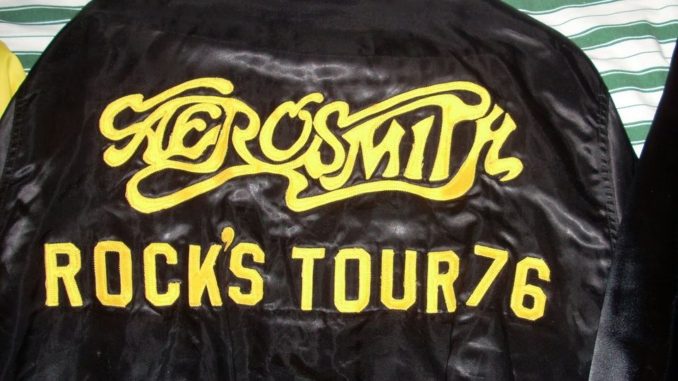
Aerosmith would grow to become one of the biggest concert attractions in America during the 1970s.
Their self-titled first album was primarily toured in their native New England area for most of 1973, but a stint as openers for Mott the Hoople (who were still riding high on the back of All the Young Dudes) gave them more nationwide exposure.
For the Get Your Wings shows in 1974, they began venturing into other parts of the US (particularly the Midwest and the South). They continued opening for other bands in larger arena shows. Radio was starting to catch on, and with radio play and press coverage picking up, word of mouth spread rapidly.
By 1975 and the Toys In the Attic tour, they had bona fide radio hits nationwide, with their fame growing exponentially. This enabled them to tour all over North America, including going to the Western US for the first time. The band headlined their own shows at this point.
By 1976, the band was accustomed to seeing their exposure and fanbase grow steadily year by year. By the time their fourth album Rocks was released, they were established rock’n’roll megastars in America. The corresponding tour was their first as major headliners and stretched well over a year. Aerosmith were huge at that point, playing in some of the largest stadiums in the US – including the Silverdome, the Kingdome, Three Rivers Stadium, and Comiskey Park.
At this point, it was natural for them to start thinking of the world outside America. If they were going to become true rock’n’roll legends they knew they had to take even further steps.
Their first international target was UK and Europe, and they embarked on their first ever European tour during the fall of 1976. The first date was at the Empire Theatre in Liverpool, England on 13 October. They were supported on the tour by Phoenix (a band formed from the ashes of Argent).
Aerosmith might have been basking in superstardom in America, but forgot to consider the fact that they still hadn’t quite broken through in other territories. The tour was basically planned as if it had been an extension of the US tour, with the same levels of income and expenditures. This included a private jet to fly them from show to show.
The shows were generally great, and although the crowds were smaller than in America at the time, their reputation was growing. The tour gave the band good PR and album sales grew a lot. The tour was having a good effect on their reputation as a kick-ass rock’n’roll band.
This could not prevent the tour from being an utter financial disaster.
Income per show averaged $3,000 – and shows were not always daily. Having a jet at their disposal cost them $18,000 a day. The European leg of the tour lasted about a month. Anyone with simple math skills can figure out what kind of cash flow these factors alone led to – and that’s not even including the cost of hotels, food, entertainment and what have you.
This was a serious financial blow to the band, and who knows if it discouraged them from returning? As history shows, they were definitely not too keen to repeat the experience, likely for a number of reasons. Suffice to say they focused on their home country until their comeback in the latter half of the 1980s when more sensible tour planning prevailed.

Facebook Comments